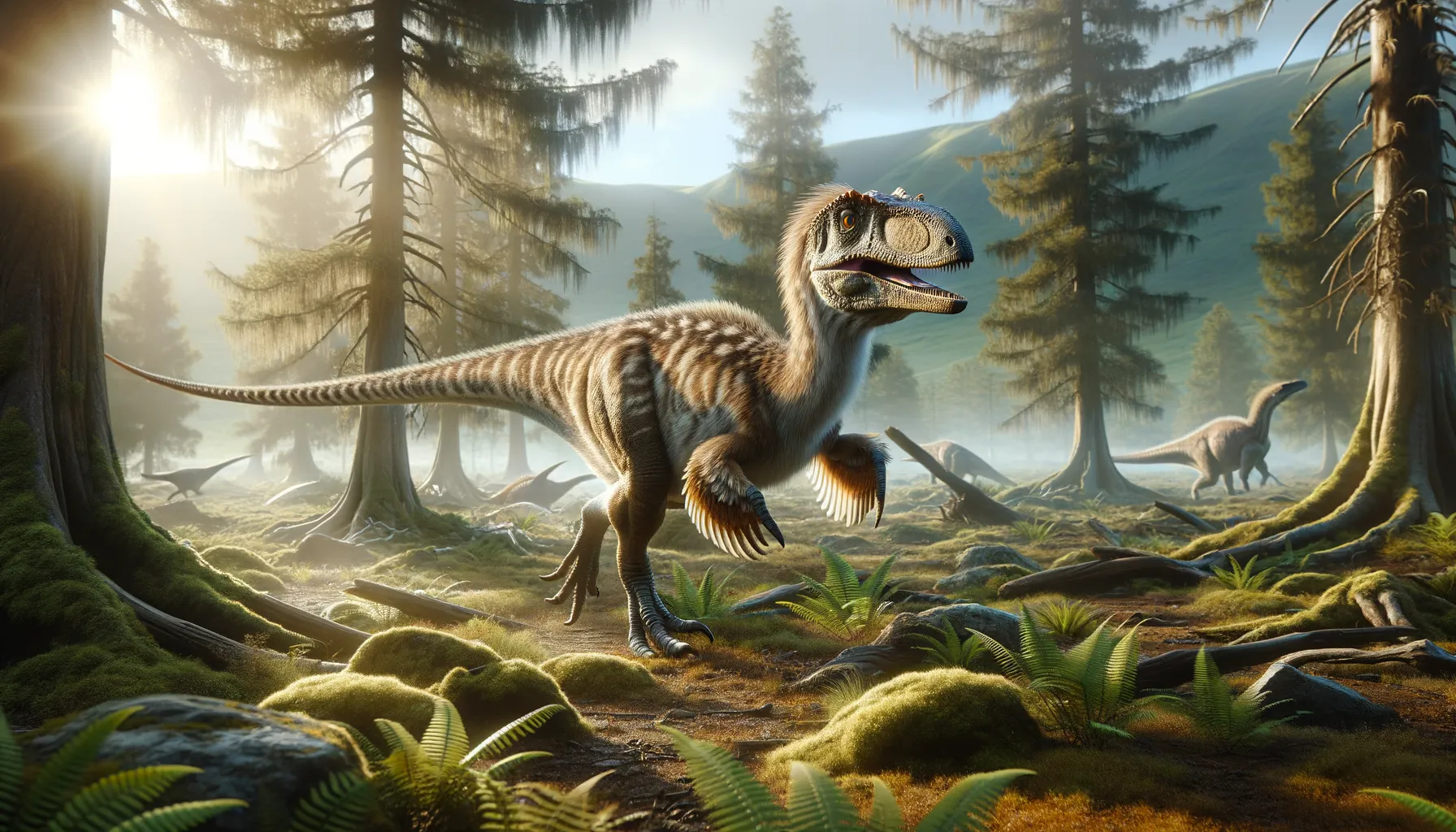
Almas
Swift predator of the Late Cretaceous steppes
Period
Cretaceous
Length
Roughly 2 to 3 meters long.
Height
About 0.8 meters tall at the hip.
Weight
Approximately 15 to 25 kilograms.
Almas is a fascinating small, bird-like theropod dinosaur that roamed central Asia during the Late Cretaceous period. It is known for its distinctive features, which include a relatively light build allowing for swift movement. Fossils of Almas have provided crucial insights into the diversity of theropods in Mongolia. This intriguing dinosaur species contributes to our understanding of their evolution and adaptations in a changing environment.
Diet
Almas was likely an omnivorous dinosaur, feeding on a variety of plant materials, small animals, and possibly insects. Its small, sharp teeth and agile body suggest it was well-adapted to a diverse diet.
Hunting
As an opportunistic forager, Almas might have hunted small prey or scavenged as needed. Its sharp claws and teeth were suitable for catching small animals or tearing into plant material.
Environmental challenges
Living during the Late Cretaceous period, Almas faced fluctuating climates and environmental changes. The expansion of flowering plants during this era may have altered its dietary options. Additionally, Almas had to compete with larger predators for resources, necessitating strategic adaptations for survival.
Speed
Moderate speed, typical of small theropods.
Lifespan
Estimated at around 20 to 30 years.
First discovery
Found in Mongolia's Late Cretaceous deposits.
Fun Facts
- Almas was a dinosaur that lived during the Late Cretaceous period, around 85 million years ago.
- This dinosaur was discovered in the Gobi Desert of Mongolia, one of the richest areas for dinosaur fossils.
- Almas belonged to a group known as the troodontids, which are closely related to birds.
- It was a small, feathered dinosaur, probably about the size of a large turkey, and had a bird-like appearance.
- The name Almas comes from a mythical creature in Mongolian folklore, often described as an elusive, ape-like humanoid.
- Despite its small size, Almas had keen senses and was likely a skilled hunter and scavenger.
- Scientists believe Almas had a large brain relative to its body size, suggesting high intelligence for a dinosaur.
Growth and Development
Almas is believed to have experienced rapid growth during its juvenile stages, a trait common among small theropods. This quick growth would have helped it avoid predators and reach maturity. The species possibly developed significant physical changes, such as elongated limbs and a more compact body, as it aged.
Habitat
Almas inhabited what is now Mongolia, thriving in a semi-arid environment with scattered forests and open plains. This ecosystem supported a variety of plant and animal life, offering ample food sources. The diversity of its habitat likely encouraged adaptability in its lifestyle and behavior.
Interaction with other species
Almas may have coexisted with other small theropods and larger herbivorous dinosaurs. Competition for resources with these species likely drove its development of diverse hunting and foraging strategies. It might also have had symbiotic or antagonistic interactions with contemporaneous species based on shared habitats.
Natural lifespan
Almas likely lived up to 20 or 30 years in the wild.
Reproduction
Almas is assumed to have laid eggs like other theropods, likely in nests built by the female. Parental care might have been minimal, with hatchlings being relatively independent soon after birth. These reproductive strategies ensured a high number of offspring to offset environmental pressures.
Social behaviour
Almas might have been a solitary creature or lived in small groups, depending on resource availability. Its behavior could have included territory marking and communication through vocalizations or visual displays. Any potential group interactions likely revolved around hunting efficiency or reproduction.
Fossil locations
Almas fossils have primarily been discovered in the Nemegt Formation of Mongolia. These findings, in the Gobi Desert region, are significant for understanding the diversity of Late Cretaceous theropods. The fossilized remains include partial skeletons, offering valuable information about its morphology and lifestyle.
